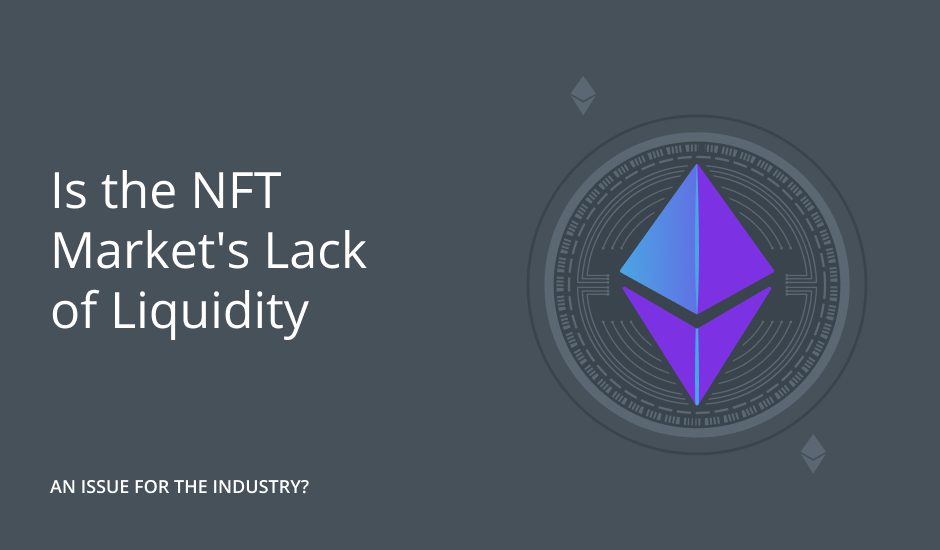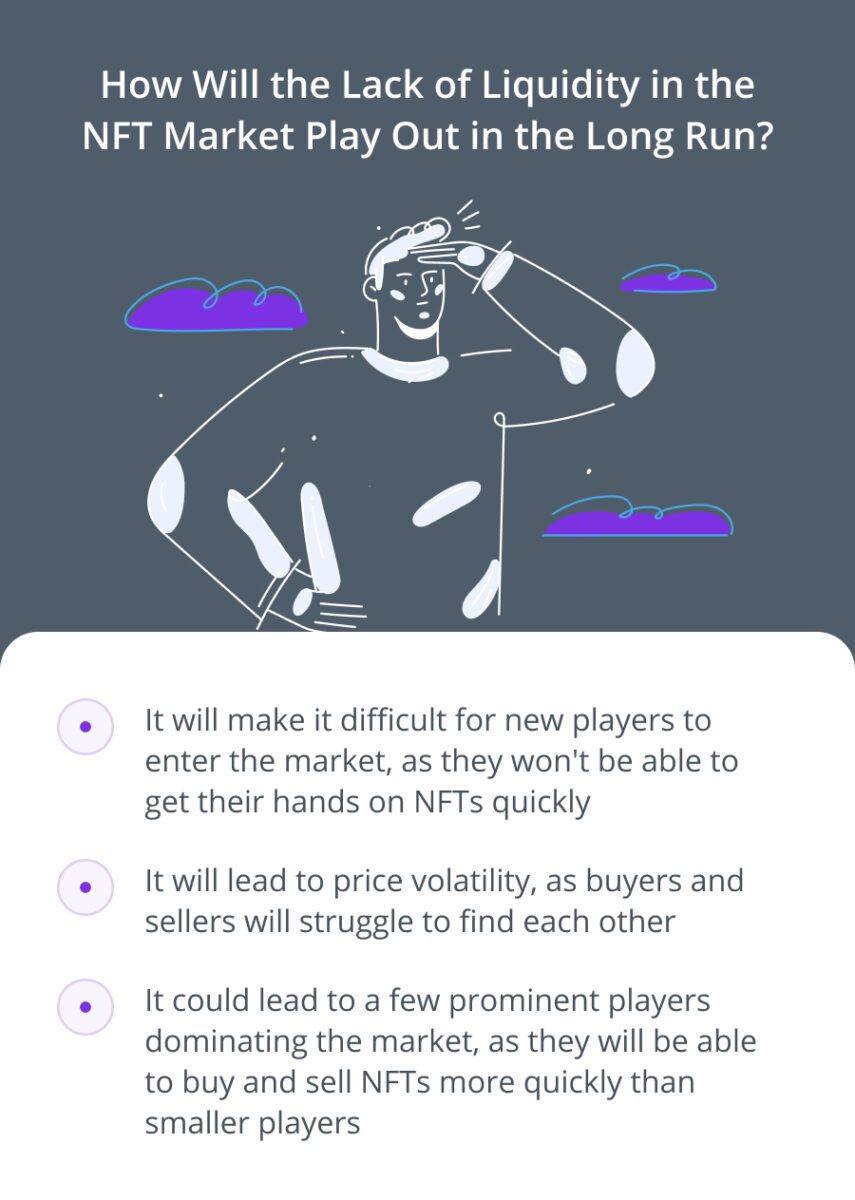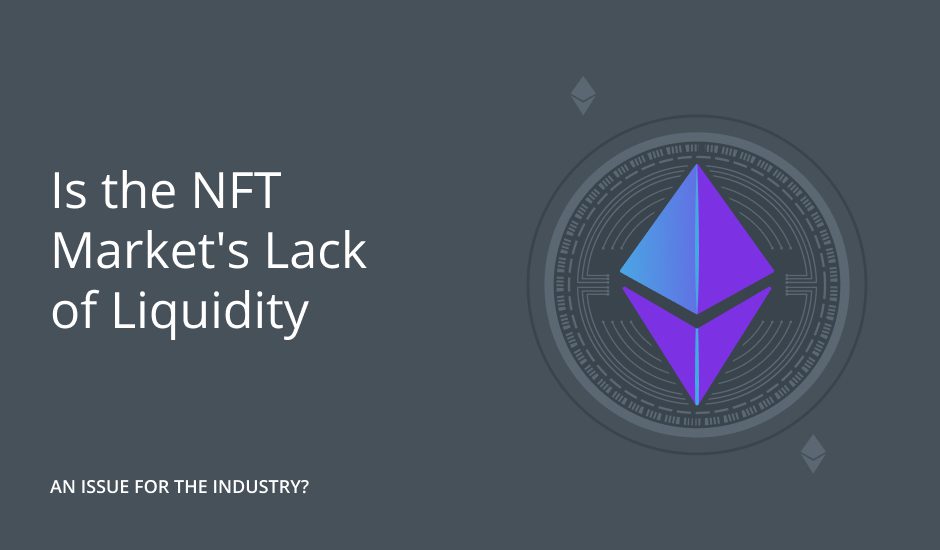
The current state of the NFT market is cause for concern among investors and industry insiders. The lack of liquidity in the market has led to several problems, chief among them being the difficulty of exchanging tokens for goods or services. This has harmed both individual investors and the industry as a whole.
This article will explore the issue of liquidity in the NFT market, the solutions being proposed to address it, and the implications for the future development of this nascent industry.
NFTs or Non-Fungible Tokens are unique digital assets that cannot be substituted for another. They usually represent digital collectibles, such as in-game items or artwork.
The market for NFTs is growing because they offer several advantages over traditional assets. For example, anyone can use them to create digital scarcity, which is essential for creating a valuable collectible.
NFTs can also represent ownership of tangible things like real estate or automobiles. This may facilitate the transfer of ownership and lessen fraud.
The fact that NFTs may be bought and sold with ease on digital platforms is one of their key advantages. Due to this, they are well-liked by investors and collectors seeking to acquire and trade rare goods.
However, the lack of liquidity in the NFT market could be an issue for some investors, as we explain in the following section.
The sector may have problems due to the NFT market’s lack of liquidity. This is because it makes it difficult for investors to trade tokens, which can impact prices and hamper growth.
In addition, it can be difficult for companies to raise money through initial coin offerings (ICOs) with a limited supply of NFTs. This could limit the amount of funding available to projects in the space and stunt innovation.
While the lack of liquidity may be seen as a negative by some, it is worth noting that this is not necessarily a new problem. The crypto market has always been notoriously illiquid, which has not stopped it from becoming a multi-billion dollar industry. The NFT market may follow a similar path and eventually become more liquid as it matures.
The current lack of liquidity in the NFT market is a significant issue for the industry. Some have proposed that the solution is to create more centralized exchanges where Investors can trade NFTs. Centralization may help increase liquidity, but it also comes with its own problems.
Other proposed solutions include creating decentralized exchanges or marketplaces where anyone can trade NFTs. This would allow for more peer-to-peer trading and could potentially increase liquidity. However, it is unclear how effective these solutions would be in practice.
Another solution the market may evaluate is creating NFTs that are more easily traded or exchanged. This would make it easier for buyers and sellers to trade NFTs and potentially increase liquidity. However, it is unclear how this would be implemented in practice.
For example, one proposal is to create an NFT standard that would allow for interoperability between different platforms. This would make it easier to trade NFTs between other platforms and increase liquidity.
For example, the lack of a solid multi-chain NFT marketplace is a significant issue in the current market. OpenSea only works with Ethereum-based assets, while only minor marketplaces support a variety of different blockchains.
The NFT industry needs to solve the liquidity issue to continue growing. Otherwise, the market will likely stall or even decline. There are a variety of solutions being proposed, but it is unclear which one will be most effective in practice.
Since the introduction of Bitcoin, the Ethereum development, and other important milestones, the blockchain market has grown exponentially.
So far, the lack of liquidity has not been a massive issue for the NFT market, as it is still in its early days. However, it could become a problem as the market grows and more people get involved.
If you’re considering investing in NFTs, you should be aware of the potential risks of a lack of liquidity. However, if you’re patient and willing to hold onto your NFTs for a while, then you could still make a profit in the long run.
BendDAO’s recent crisis is the perfect example to assess the ramifications of NFT illiquidity. The platform lets users deposit NFTs as collateral to loan cryptocurrencies (specifically, Ether) and earn interest on those deposits. However, a lack of borrowers has caused many lenders to go unpaid.
It’s important to note that BendDAO is not the only platform facing this issue. It’s become a common problem throughout the industry.
The problem stems from the fact that, while NFTs are often lauded for their rarity, this quality makes them illiquid. There are not enough buyers to go around.
This is a severe issue for the industry, making it very difficult for projects to raise capital. After all, if there are no buyers for your NFTs, how are you supposed to sell them?
The NFT market’s lack of liquidity is a serious problem that requires attention. Otherwise, it can result in the industry as a whole failing.
The success of NFTs has followed a spectacular trajectory, but the industry faces fundamental challenges that someone must address.
The lack of liquidity is one of the most pressing issues, making it difficult for projects to raise capital and hampers the development of a robust secondary market.
The outcome of this matter cannot be predicted in advance, but it is obvious that action must be taken to safeguard the NFT market’s long-term success.
Gianluca Longinotti is an economist and investor with several start-ups under his belt and two Master’s Degree in Finance at Sorbonne University. He has years of experience in the sector and follows the markets on a regular basis with the aim of transferring knowledge to a large audience of readers.
Your email address will not be published.
document.getElementById( “ak_js_1” ).setAttribute( “value”, ( new Date() ).getTime() );
© TechPresident – All rights reserved 2021.
© TechPresident – All rights reserved 2021.


